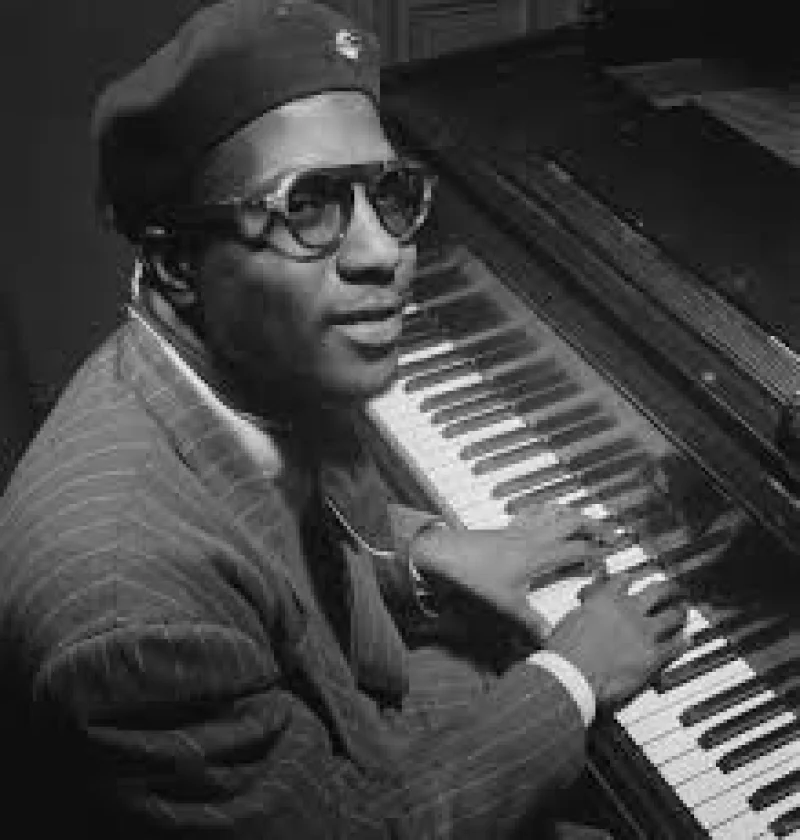Short Summary
Thelonious Monk was an influential American jazz pianist and composer known for his unique improvisational style and the development of modern jazz. His work is characterized by dissonant harmonies, angular melodic twists, and innovative rhythmic patterns. Monk's contributions to music include numerous compositions that have become jazz standards, and his influence extends across generations of musicians. He is celebrated for his original approach and lasting impact on the jazz genre.
Early Life & Education
Thelonious Monk was born on October 10, 1917, in Rocky Mount, North Carolina, and moved to New York City with his family at a young age. Raised in the vibrant neighborhood of San Juan Hill, Monk was exposed to a diverse array of musical influences. He began playing the piano at the age of six and was largely self-taught, although he did receive some formal music education. Monk's early influences included the gospel music he heard in church, as well as the jazz and blues that permeated his environment. His unique style and innovative approach to music began to develop during these formative years.
Career Highlights
Monk's career took off in the early 1940s when he became the house pianist at Minton’s Playhouse, a jazz club in Harlem known for its role in the development of bebop. During this period, he played alongside jazz greats such as Dizzy Gillespie and Charlie Parker. In the 1950s, Monk began recording as a bandleader and released several influential albums, including "Brilliant Corners" and "Thelonious Monk with John Coltrane." His collaborations with other legendary musicians, such as Miles Davis and Art Blakey, further cemented his reputation as a pivotal figure in jazz. Monk's distinctive style and compositions, including "Round Midnight" and "Blue Monk," remain enduring contributions to jazz music.
Major Achievements
- Composed numerous jazz standards, such as "Round Midnight" and "Blue Monk," that are widely performed and recorded.
- Recorded influential albums like "Brilliant Corners" that helped shape the modern jazz landscape.
- Honored with a Grammy Lifetime Achievement Award in 1993 for his contributions to music.
- Inducted into the Rock and Roll Hall of Fame in 1997, highlighting his influence beyond jazz.
Famous Quotes
- "The piano ain't got no wrong notes."
- "You've got to dig it to dig it, you dig?"
Interesting Facts
- Thelonious Monk was known for his quirky behavior, often seen dancing during performances when others were soloing.
- He appeared on the cover of Time magazine in 1964, a significant recognition for a jazz musician.
- Monk's unique fashion sense included wearing distinctive hats and suits, adding to his enigmatic public persona.
Legacy / Influence
Thelonious Monk's innovative approach to jazz has left a profound and lasting impact on the genre. His compositions continue to be integral to the jazz repertoire, and his distinctive style has influenced countless musicians across various genres. Monk's ability to push musical boundaries and maintain artistic integrity has inspired generations of artists, ensuring his place as a pivotal figure in the history of modern music.
FAQ
Q: Why is Thelonious Monk famous?
A: He is famous for his pioneering contributions to modern jazz and his unique improvisational style.
Q: What are some of Monk's most famous compositions?
A: Some of his most famous compositions include "Round Midnight," "Blue Monk," and "Straight, No Chaser."
Q: How did Monk influence jazz music?
A: Monk influenced jazz through his innovative use of dissonance, rhythm, and melody, which helped shape the modern jazz sound.











